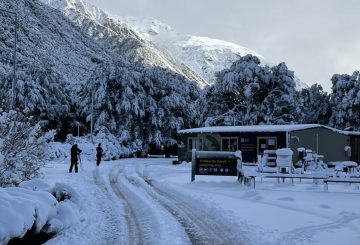Ang paksa ng “klima mobility” o ang paggalaw ng mga tao at pamayanan dahil sa pagbabago ng klima, ay naging isang pangunahing isyu sa COP28 climate summit sa Dubai. Mayroong halos 25 sesyon na nakatuon sa mga pangangailangan at karapatan ng mga nalilipat ng pagbabago ng klima.
Sa unang araw ng summit, isang kasunduan ang naabot sa isang pondo na “pagkawala at pinsala” upang suportahan ang mga mahina na bansang apektado ng pagbabago ng klima. Gayunpaman, hindi pa rin malinaw kung paano gagana ang pondong ito kasama ng Global Stocktake, isang ulat sa pag-unlad patungo sa mga layunin ng Kasunduan sa Paris.
Ang isyu ng kadaliang kumilos ng klima ay naging mahirap matugunan sa loob ng United Nations Framework Convention on Climate Change (UNFCCC). Walang pinagkasunduan kung paano protektahan ang mga mamamayan ng mga bansa na binabanta ng pagbabago ng klima. Mayroon ding kaunting kalooban sa politika upang baguhin ang kahulugan ng “refugee” upang isama ang mga apektado ng pagbabago ng klima.
Ang isang kamakailang kasunduan sa pagitan ng Australia at Tuvalu, na kilala bilang Falepili Union, ay nag-aalok ng isang landas para sa mga mamamayan ng Tuvalu na apektado ng pagbabago ng klima upang makakuha ng pagkamamamayan ng Australia. Gayunpaman, ang kasunduang ito ay nangangailangan ng Tuvalu na sumang-ayon sa Australia sa anumang mga pag-aayos na nauugnay sa seguridad at depensa sa ibang mga bansa, na nagdulot ng mga alalahanin tungkol sa pambansang soberanya ng Tuvalu.
Nagtatalo ng mga kritiko na ang Falepili Union ay mas kapaki-pakinabang sa Australia kaysa sa Tuvalu. Itinuro din nila na ang mga mamamayan ng Tuvaluan ay hindi kinonsulta tungkol sa kasunduan.
Ipinapakita ng pananaliksik na ang mga komunidad na apektado ng pagbabago ng klima ay nangangailangan ng pagpipilian na manatili sa kanilang mga tahanan Ang mga matagumpay na diskarte para sa natitirang nasa lugar ay ginagamit na sa Pasipiko. Halimbawa, ang mga komunidad sa Samoa ay nakakita ng mga paraan upang umangkop sa pagbabago ng klima na nagbabawas sa parehong pisikal na panganib at pinsala sa kultura.
Kailangang tumuon ang summit ng COP28 sa pagprotekta sa soberanya ng mga mahina na estado at pagtiyak na ang hustisya sa klima ay binibigyang priyoridad. Ang maliliit na estado ng isla at mga tao sa Pasipiko, na napakaunti ang nag-ambag sa mga sanhi ng pagbabago ng klima, ay kabilang sa mga unang naramdaman ang mga epekto nito. Ang karapatan ng mga tao na magpasya sa kanilang sariling hinaharap sa adaptasyon, kabilang ang mga pagpipilian upang umangkop sa lugar, ay maaaring matugunan sa COP28.




























































